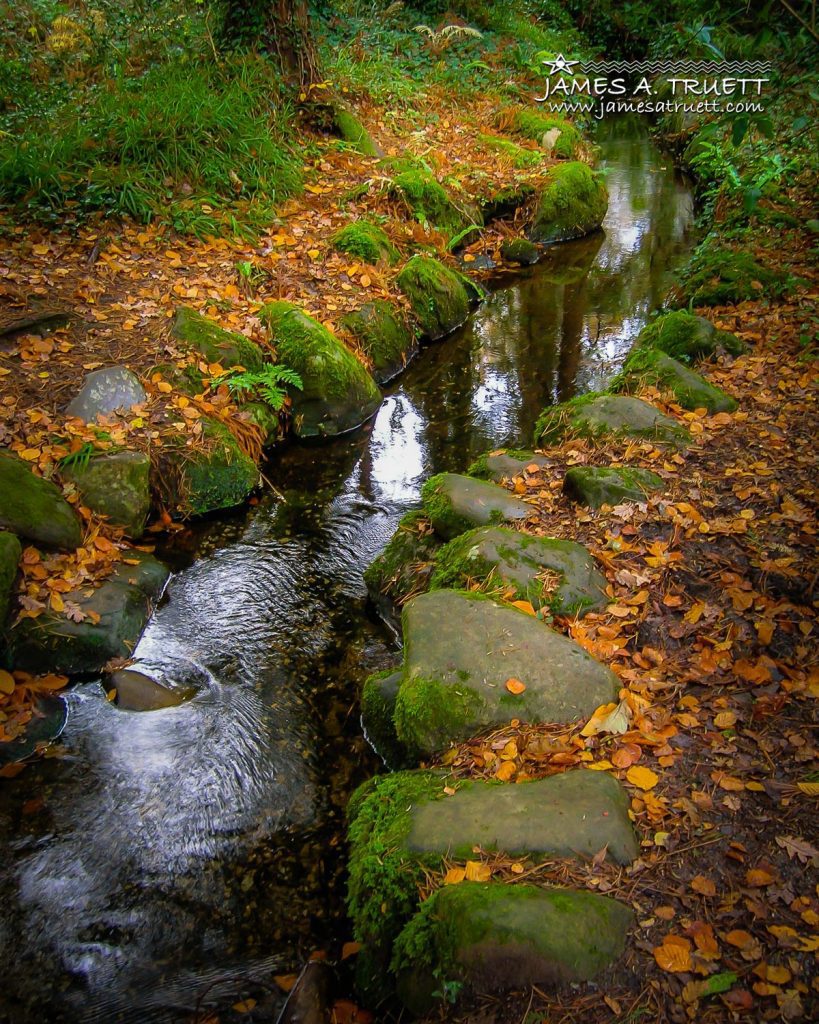Why is Ireland Always Green? It’s not just rain!

While assorted vegetation undergoes its Autumn metamorphosis, there’s one constant on the island of Ireland — the pastures and hillsides are always green, hence the nickname “Emerald Isle.”
Like the weather in Washington State and British Columbia, the Irish climate is a haven for rainforest-like conditions. Moss grows everywhere, and while some plant and flower varieties are retiring to await the resurgence of Spring, others still grow.
Ireland’s mild climate is more a result of the effects of the warm North Atlantic Drift current than its latitude. Canada’s Newfoundland and Labrador are in the same latitude, and they have freezing temperatures and lots of snow each year!
In the case of the Emerald Isle, the North Atlantic current carries with it the warm waters of the Gulf Stream, moderating temperatures to an average 45 degrees (7 degrees Celsius) in January, when Newfoundland and Labrador usually are hit with extreme cold spells well below freezing.
Average summer temperatures in Ireland vary from 59 to 68 degrees (15 to 20 degrees Celsius).
Rainfall and mild temperatures allow the grasses and mosses to thrive, hence the descriptive nickname, The Emerald Isle.
Two areas are particularly notable for hosting a broad and unusual mix of flora and fauna: Killarney National Park in County Kerry and Burren National Park in North County Clare.

Killarney National Park, with 10,236 hectares (26,000 acres) was Ireland’s first National Park, established in 1932 and designated a UNESCO Biosphere Reserve in 1981.
It hosts a varied range of native vegetation including Oaks, Yews, evergreens and shrubs. The temperate Kerry climate provides a rainforest-like habitat for mosses and lichens.
The park rests at the foot of Ireland’s tallest mountain range — McGillycuddy’s Reeks — rising up to over 1,000 metres (about 3,000 feet).

While much smaller than Killarney National Park, Burren National Park packs incredible diversity into its 1,500 hectares (3,700 acres).
Despite the rough geology and lack of significant soil, the Burren plays host to more than 70 per cent of Ireland’s native plant species. Arctic and alpine plants co-exist alongside Mediterranean species.
Ice, rain and the oceans joined forces millions of years ago to sculpt Ireland’s rugged limestone Burren landscape.
As recently as 15,000 years ago, this region was covered with ice, gently shaping the limestone terraces characteristic of the area.
The area also is believed to have been wooded with much more soil in prehistoric times. However, the human insistence on cutting trees and clearing woodlands had the detrimental effect of exacerbating erosion with the resulting loss of topsoil.
Spring in the Burren is a spectacular time to visit the Burren when all sorts of wildflowers bloom in odd places in the limestone pavement.
So, it’s the combination of rain and warmer temperatures moderated by the North Atlantic Drift Current that influence Ireland’s weather.
What happens if climate change slows down the North Atlantic Drift Current? Ireland’s and Northwestern Europe’s temperatures could drop significantly, and we might have to change the island’s nickname to “Icy Isle”…
You can read more about the vital North Atlantic Drift Current: here











